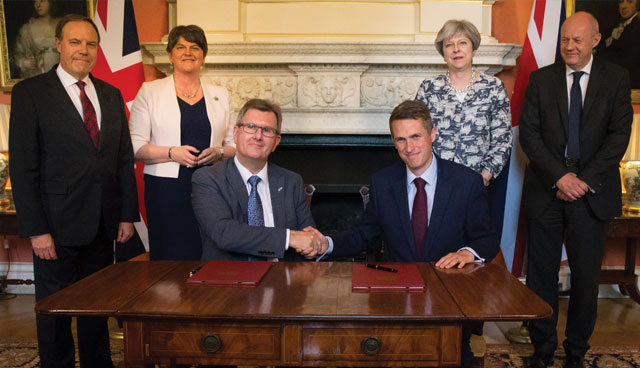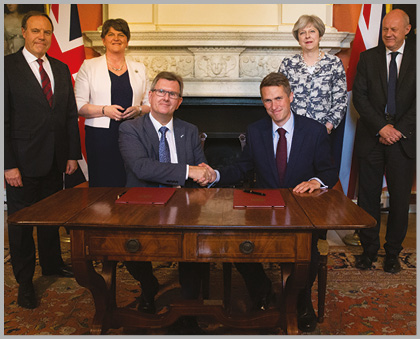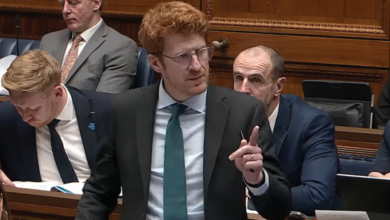Confidence and supply


Following the decision by the Conservatives and the DUP to sign a confidence and supply arrangement rather than enter into an explicit coalition, agendaNi explores what the current deal means.
The last coalition agreement at Westminster between the Conservatives and the Lib Dems worked well for the Tories, however, the later electoral demise of the Lib Dems highlighted the pitfalls of being a minority coalition partner.
The fact that it lasted for the full term came as a shock to most and after the subsequent General Election handed David Cameron a substantial majority, the Tories enjoyed filling the cabinet with their party members alone.
So it was undoubtedly with gloom as they watched Theresa May concede a healthy majority through the recent snap election in an unsuccessful attempt at power consolidation.
The idea of another Lib Dem agreement was mooted but it always seemed more likely that it would be the 10 MPs of the DUP that would end up supporting the Government in some shape or form.
While a coalition appeared the most obvious solution in enabling Theresa May to form a Government, the final deal hammered out came in the form of a confidence and supply deal.
Concerns around aligning the party with some of the DUPs ideology may have been a key factor in not wanting to cement a formal partnership, but there are also other benefits for the Conservatives of confidence and supply rather than coalition.
As well as alleviating the threat of defeat at every key vote, a scenario that limits any minority government, the party were guaranteed support on the Queen’s Speech, the subsequent Budget, legislation relating to Brexit and national security. In attaining this arrangement, the Tory party neither had to negotiate their policy programme or give up any ministerial positions.
The benefit for the DUP is that it is not aligned to the Government’s policy programmes after its initial confidence was offered to allow the Government to form. It retains its independence in parliament and, in doing so, opens the door to further concessions, on top of the additional funding it secured in the original deal. The disadvantage is that they are accountable for supporting any unpopular budget policies, with little to no influence on their definition.
A further headache for the Conservatives is that they undoubtedly accept that they need to negotiate DUP support on an issue by issue basis, something that would have been guaranteed through coalition.
While confidence and supply deals and minority governments are usually fractious and short lived, there are working examples. In the Republic of Ireland, Fianna Fáil continue to support the Fine Gael-led minority government, albeit from an opposition stance.
Globally, New Zealand’s Nationalist Party govern under a supply and confidence agreement with the Maori party after they fell two votes short of a majority during the 2014 election.
In Westminster, the last confidence and supply deal (Lib-Lab Pact), allowed Labour’s Jim Callaghan to stay in power with the support of the Liberal Party, although the government lasted only 18 months.





